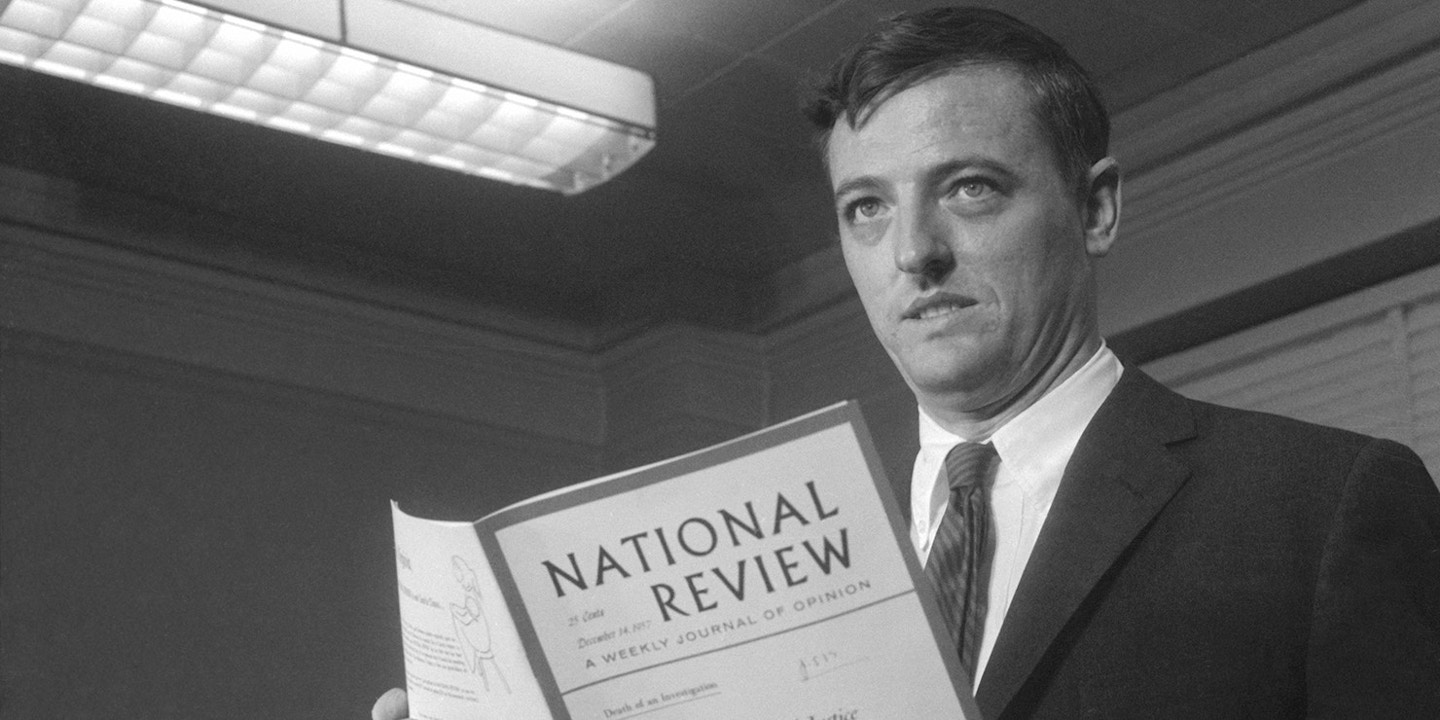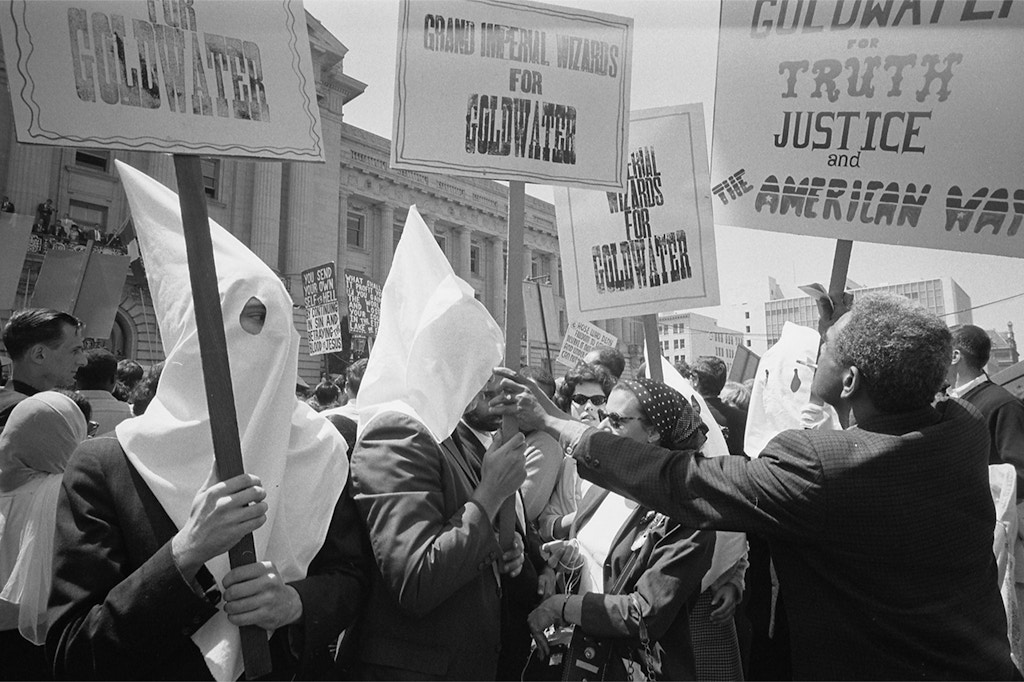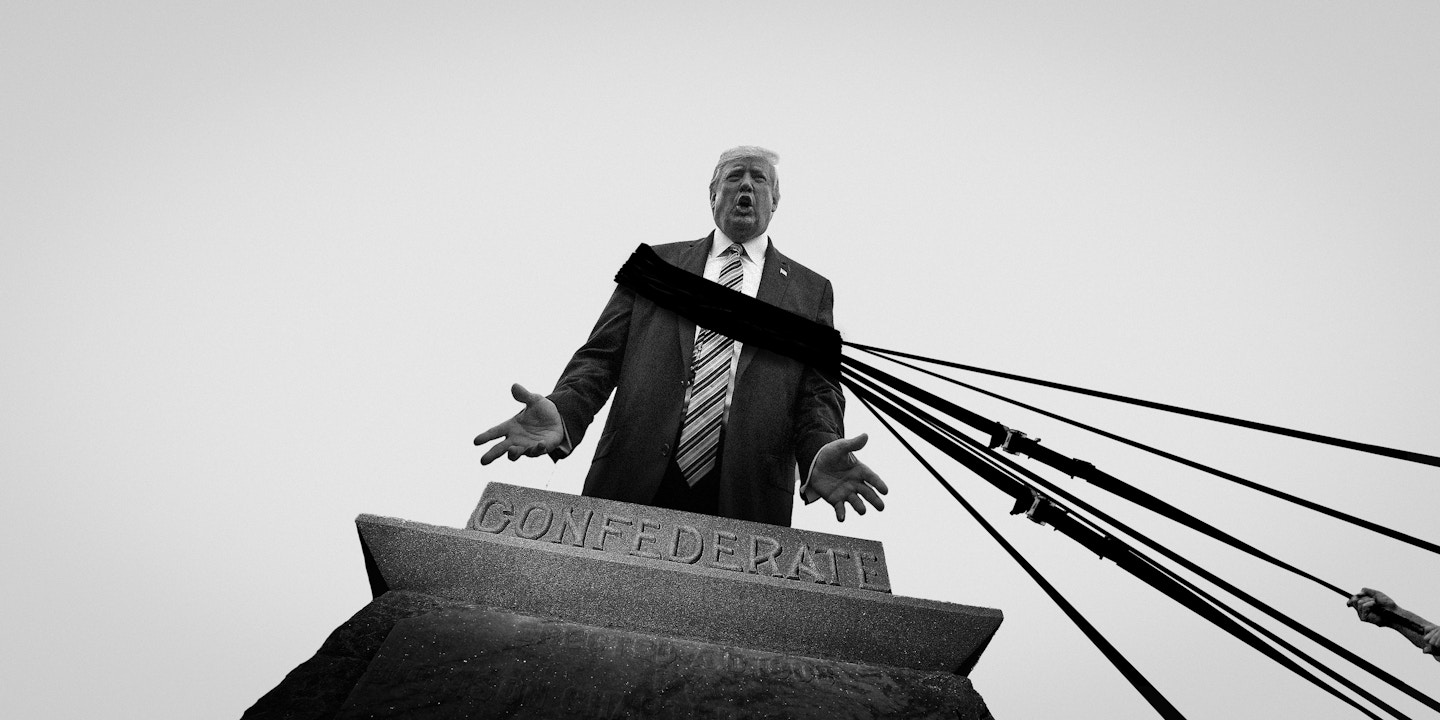POLICE ATTACKS ON PROTESTERS ARE ROOTED IN A VIOLENT IDEOLOGY OF REACTIONARY GRIEVANCE
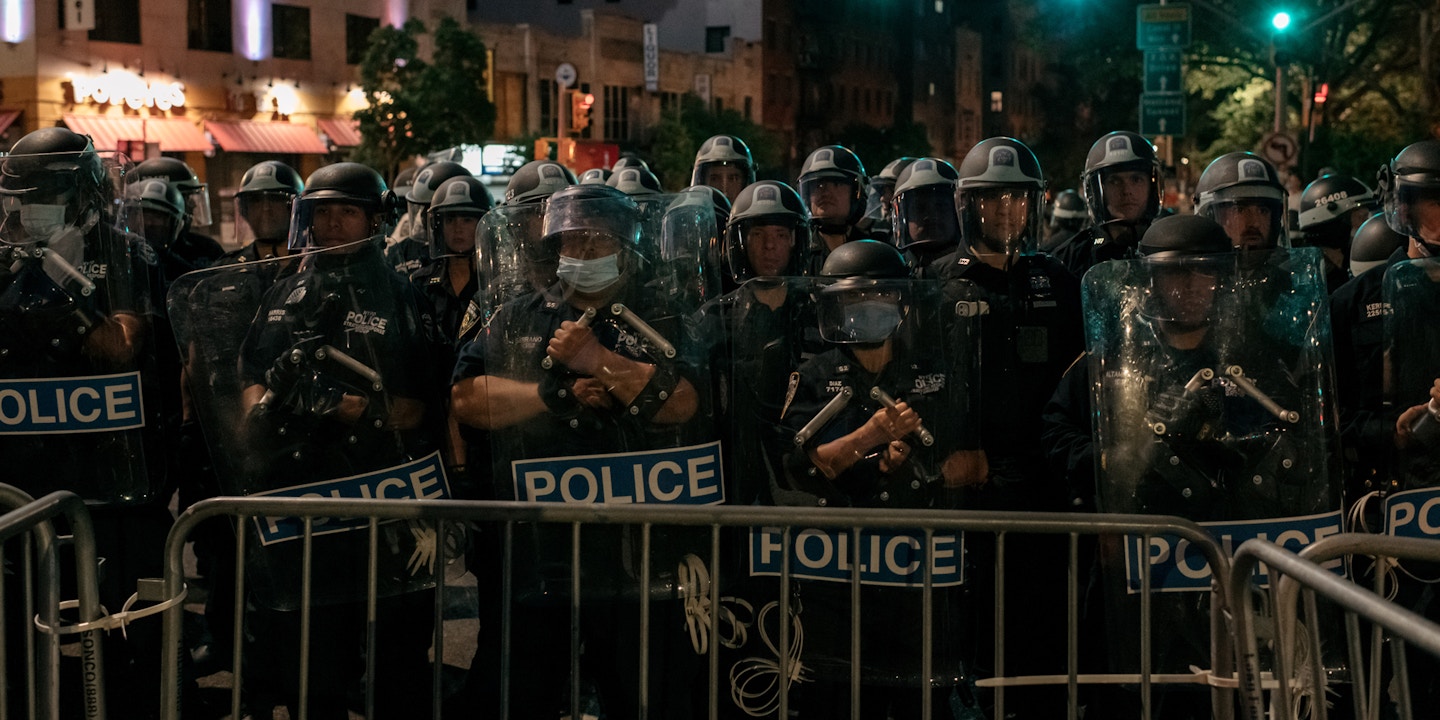
NYPD officers block the exit of the Manhattan Bridge as hundreds protesting police brutality and systemic racism attempt to cross into the borough of Manhattan from Brooklyn hours after a citywide curfew went into effect in New York City on June 02, 2020. Photo: Scott Heins/Getty Images
Ryan Devereaux June 6 2020 THE INTERCEPT
THE SUN WAS HIGH as the protesters filled Grand Army Plaza. In normal times, it’s easy to forget that the gateway to Brooklyn’s largest park was once a battleground in the fight for American independence, or that its iconic “Soldiers and Sailors Arch” is a monument to those lost in the war to end slavery. But with a global pandemic having taken more than 100,000 American lives in a matter of months, more than 40 million others out of work, and protests against police violence sweeping the U.S., recent days have been far from normal, and as demonstrators took their places on Sunday, the plaza’s place in history felt unusually present.
Kenyatta Reid, a Brooklyn native, was among those gathered at the foot of the arch. Reid and her husband had come to the protest with their three young children, ages 11, 8, and 2. It was the family’s second day in the streets, joining the nationwide wave of demonstrations following the killing of George Floyd by Minneapolis police Officer Derek Chauvin. The previous night, near the Brooklyn Bridge, Reid and her family had watched as New York City police officers in riot gear beat and pepper-sprayed protesters. “That got really scary for the kids,” Reid told me. Still, her children woke up the next morning asking to go out again — they had even made their own signs. “Am I next?” her son’s read.
As an African American mother raising three kids in the United States in 2020, Reid said the conditions that sparked the protests are the subject of daily parental education, a process of “letting them know that they’re worthy, and the problem is other people, not them.” When asked if they would keep coming out, Reid did not hesitate. “This is their lives,” she said. “You have to.”
Join Our Newsletter
Original reporting. Fearless journalism. Delivered to you.
I’m in
Hundreds of miles away, in Cincinnati, reaction to the protests was taking a different shape. While demonstrators were gathering in Brooklyn, a group of Hamilton County sheriff’s deputies dressed in tactical gear and body armor, many of them carrying rifles, hoisted a pro-police flag outside of their office. Ubiquitous in some parts of the country, the flag replaces the red of a traditional American flag with black. The banner incorporates a blue band to symbolize the “thin blue line” that some police officers believe they represent: society’s well-armed firewall, protecting an otherwise defenseless public from the forces of evil.
Sheriff Jim Neil later said that the flag replacement was only temporary, after an image of his deputies’ informal ceremony went viral. The office’s American flag had been lost to vandals, the sheriff tweeted, and the current one was meant to honor an officer whose helmet was struck with a bullet the previous night. “The flag has been removed and we will replace it with the American Flag in the morning,” Neil wrote.
Though minor in comparison to the acts of physical violence and outpourings of grief seen across the country, the episode in Cincinnati was significant. The “thin blue line” flag is the known symbol of a social, cultural, and political movement that is inextricably linked to the country’s current unrest. The flag is the centerpiece in a world of merchandise and policing philosophy, all built around the idea that the police are an embattled tribe of warriors, maligned and reviled by a nation that fails to appreciate their unique importance. The blue line is a reminder that much of the policing community sees itself as separate from the rest of society — and as the nation has witnessed in recent days, in video after shocking video, this well-armed population, imbued with the power to deprive citizens of life and liberty, does not take kindly to those who challenge its authority.
The country is now witnessing what years of militarized conditioning, training, and culture have wrought: a nationwide protest movement running up against a nationwide police riot.
“What we’re talking about here is a worldview that says that police are the only force capable of holding society together,” Alex Vitale, a professor of sociology at Brooklyn College and author of “The End of Policing,” told me. The view turns on the notion that “without the constant threat of violent coercive intervention, society will unravel into a war of all against all,” he explained. Seen through this lens, “authoritarian solutions are not just necessary, they’re almost preferable.”
In the wake of Floyd’s killing, with protests in every state in the union and U.S. security forces at every level called to respond, the country is now witnessing what years of militarized conditioning, training, and culture have wrought: a nationwide protest movement running up against a nationwide police riot.
In New York City, where at least 2,500 people have been arrested in the past week, local officials have imposed an 8 p.m. curfew, which the New York Police Department has used as a pretext to arrest individuals whom it would otherwise have no justification to take into custody. In an emerging pattern that civil rights attorneys have documented in multiple boroughs throughout the city, a number of those individuals have been taken to local station houses where NYPD intelligence officers and FBI agents have interrogated them about their political beliefs, including their views on fascism. Word of the interrogations came just days after Attorney General William Barr released a statement describing the leaderless anti-fascist movement known as antifa as a domestic terrorist organization and announced that the federal government’s 56 Joint Terrorism Task Forces had been activated in a nationwide manhunt for “criminal organizers and instigators.”
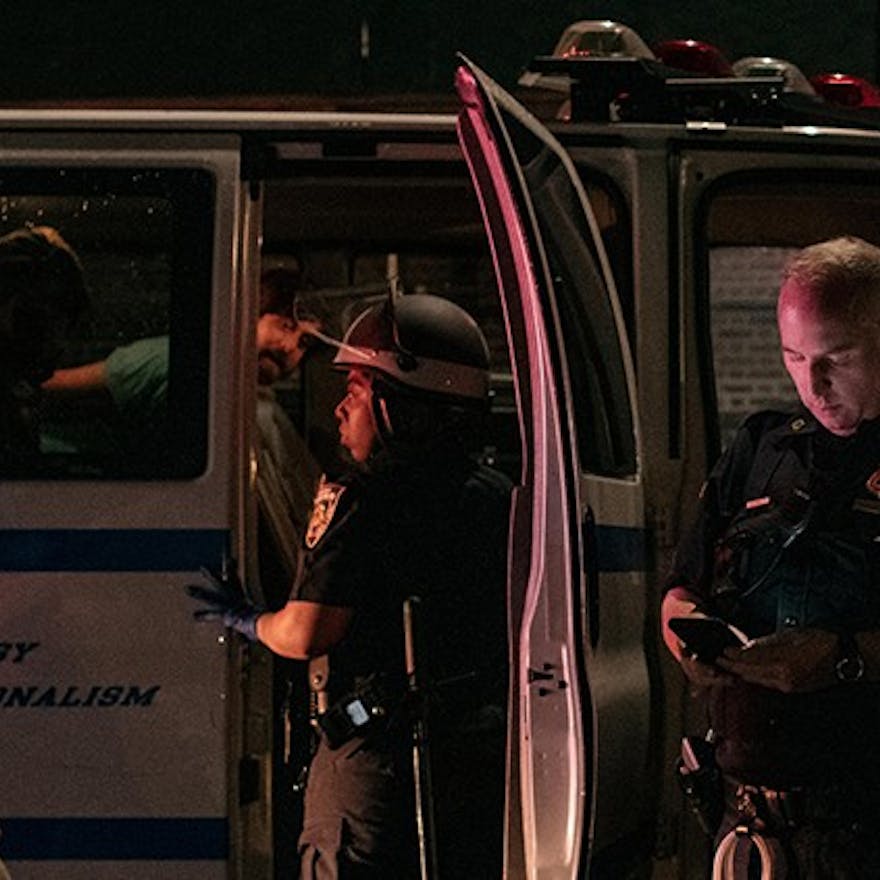
In Washington, D.C., heavily armed tactical units took up positions in the nation’s capital, wearing no official insignia. Self-styled groups of mostly white men carrying military-grade weapons were also in the streets, and local police were spotted posing for photos with bat-wielding vigilantes. Far-right, white power groups seized on the unrest to accelerate the country toward a long-desired race war: In Las Vegas, three right-wing extremists with military experience, adherents to the so-called boogaloo movement, were arrested on terrorism charges for allegedly plotting attacks in Nevada.
Michael German, a fellow at the Brennan Center for Justice and former FBI agent specializing in domestic terrorism investigations, said the government’s actions in the past week reflect entrenched, longstanding problems in American policing. From a legal and logistical standpoint, Barr’s statement regarding antifa was “toothless,” German said: “It’s a way of signaling to Trump supporters, both in law enforcement and out, that this is the enemy.”
Time and again, American law enforcement’s response to dissent has followed a pattern, German explained, with police cracking down on movements for racial, social, and environmental justice, while giving violent white nationalists who beat people in the street a free pass. “We already see that there is this dynamic where the police officers view people who protest police violence as enemies they can use further violence against,” he said. “Particularly in protests, it’s not just that the police want to arrest somebody who’s a problem,” German said. “They want to mete out punishment.”
Blue Lines Take Aim at Black Lives
Although the idea of the “thin blue line” has been around for decades, its branding and merchandising evolution began as effort to raise money for the families of slain police officers. The flag itself was created six years ago, when the U.S. was gripped with police brutality protests that gave rise to the Black Lives Matter movement. As those demands for justice picked up momentum, a countermovement, Blue Lives Matter, rose up under the newly created banner. In an article for Harper’s magazine, author Jeff Sharlet details how a white 19-year-old college student named Andrew Jacob came up with the idea for the flag. “The black above represents citizens,” Jacob, founder of the company Thin Blue Line USA, explained. “The black below represents criminals.”
The flag’s creation coincided with the December 2014 killing of two NYPD officers, Wenjian Liu and Rafael Ramos, in Brooklyn. The officers’ deaths sparked a rebellion among New York City cops against Mayor Bill de Blasio. It was a turning point for the recently elected mayor, who had capitalized on demands for police accountability in his run for office. While de Blasio has become a symbol of abject failure in the eyes of nearly all NYPD accountability advocates, the department’s powerful union has continued to publicly batter and berate the mayor on a daily basis in the years since the killings, and recently doxxed his daughter following her arrest while protesting in Manhattan.

A flag with the thin blue line, which is used to honor the fallen and the courage of police officers, lies on the boardwalk near the feet of police keeping demonstrators and counter demonstrators apart during an ‘America First’ demonstration on August 20, 2017 in Laguna Beach, California.
Photo: David McNew/Getty Images
The flag’s emergence in 2014 was but one element in a larger ecosystem of police propaganda. Like the weapons, vehicles, and training that flow from the military to police departments across the country, the Blue Lives Matter movement embraces imagery and ideology drawn from U.S. wars abroad.
The same month that the officers in Brooklyn were gunned down, Clint Eastwood’s film “American Sniper” hit theaters. The film, which swiftly became the highest-grossing war movie of all time, told the story of Chris Kyle, a Navy SEAL who, in addition to becoming a hero to many, once boasted about conducting dozens of extrajudicial killings on the streets of New Orleans in the wake of Hurricane Katrina. Though Kyle was already well known following the publication of his bestselling autobiography, the Hollywood blockbuster rocketed the sniper to conservative superstardom.
On the battlefields of Iraq, the calling card of Kyle’s platoon was an image of a skull worn by the comic book character known as the Punisher. In the Marvel series, Frank Castle, aka the Punisher, is a Marine veteran of the Vietnam War who murders people in a self-declared war on crime. In his book, Kyle, who was shot and killed by a fellow veteran in 2013, described his unit’s love for the character and his symbolic skull. “We spray-painted it on our Hummers and body armor, and our helmets and all our guns,” he wrote. “We spray-painted it on every building or wall we could. We wanted people to know, We’re here and we want to fuck with you. It was our version of psyops. You see us? We’re the people kicking your ass. Fear us. Because we will kill you, motherfucker. You are bad. We are badder. We are bad-ass.”
The Blue Lives Matter movement embraces imagery and ideology drawn from U.S. wars abroad.
Police officers across the country have developed a similar infatuation for the Punisher’s skull, plastering the vigilante killer’s symbol on T-shirts, squad cars, and other gear. In Milwaukee, a gang of officers adopted “the Punishers” as their namesake and tattooed the character’s logo on their skin. The artists and writers behind the Punisher comics have pushed back on law enforcement’s embrace, describing it as a total misreading of the character. Co-creator Gerry Conway has likened law enforcement’s use of the logo to placing a Confederate flag on a government building. “He is a criminal,” Conway has said. “If an officer of the law, representing the justice system, puts a criminal’s symbol on his police car, or shares challenge coins honoring a criminal, he or she is making a very ill-advised statement about their understanding of the law.”
The violent and militaristic view of policing reflected in the Punisher’s popularity is also present in the training officers receive. In “American Sniper,” the film’s star, Bradley Cooper, delivers a speech to his sons at the kitchen table, explaining that there are three types of people in the world: sheep, wolves, and sheepdogs. The wolves seek to prey on the sheep, and it’s up to the sheepdogs — a smaller yet critical population — to protect them. The lesson is drawn directly from the teachings of Lt. Dave Grossman, a former West Point psychology professor and self-proclaimed expert on killing who teaches courses for police departments and federal law enforcement agencies across the country. Grossman’s first book, “On Killing,” was at one point required reading for FBI cadets.
In his classes, Grossman sometimes tells attendees that police officers have told him that their first killing led to the best sex of their lives, and says that with the proper training, taking a human life is “just not that big of a deal.” In 2014, Jeronimo Yanez, a Minnesota police officer, attended one of Grossman’s “Bulletproof Warrior” classes, administered by Grossman’s business partner. Two years later, Yanez pulled over Philando Castile, a black 32-year-old father, in a traffic stop. Castile informed the officer that he was in possession of a licensed firearm. Yanez grew increasingly agitated and shot him five times. Castile died in the driver’s seat, with his girlfriend and 4-year-old daughter in the vehicle. Yanez was acquitted of all charges in the trial that followed.
In the aftermath of the killing, which prompted waves of protests, Minneapolis Mayor Jacob Frey banned the warrior policing courses. Lt. Bob Kroll, president of the Police Officers Federation of Minneapolis, bristled at the decision, calling Grossman’s trainings “excellent.”
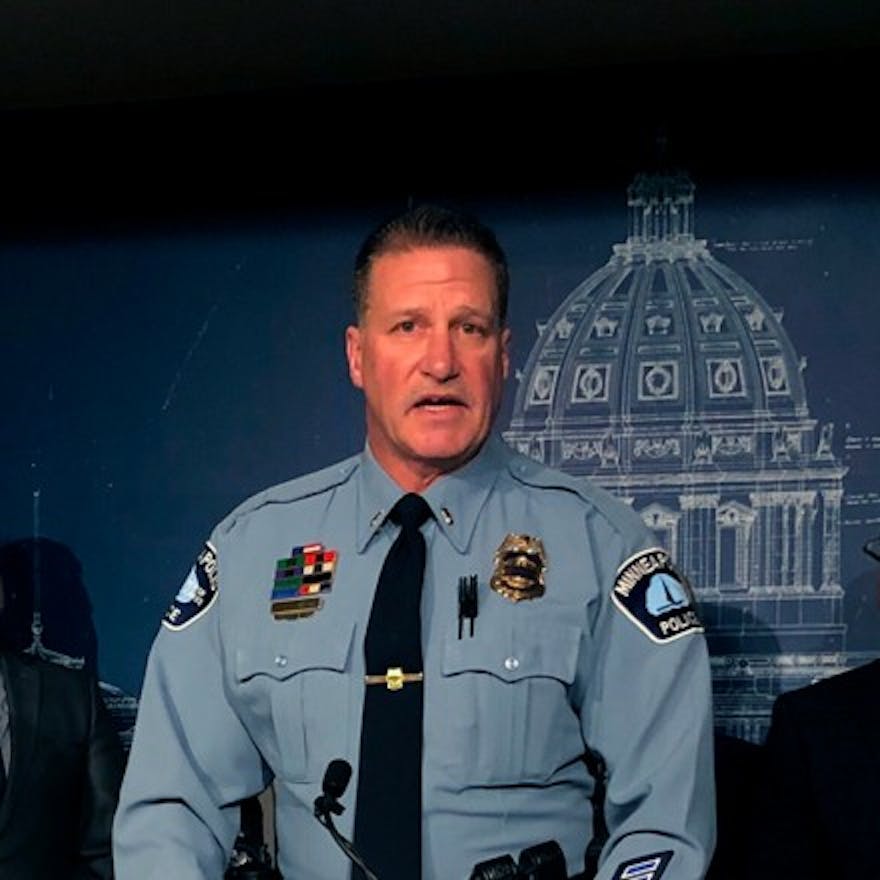
Related
Minneapolis Police Union President: “I’ve Been Involved in Three Shootings Myself, and Not a One of Them Has Bothered Me”
In an interview earlier this year, just months before the killing of Floyd in his own city, Kroll said he had personally been involved in three shootings and that “not one of them has bothered me.” A 2015 profile by the Minneapolis Star Tribune noted Kroll’s membership in a police biker gang that included white supremacists (the former SWAT officer has denied the characterization), his role as a defendant in a racial discrimination lawsuit brought by five black officers, his targeting in nearly 20 internal affairs complaints (“all but three of which were closed without discipline”), and his suspension following an excessive force complaint.
In the past year alone, multiple investigations by many news organizations have uncovered police and other law enforcement officials sharing wildly racist and violent content in private social media groups. Amid the racism that swirls in these spaces are profound notes of aggrievement expressing the feeling that, in fact, it is the police who are under attack. Those sentiments can be traced, in part, to a theory promulgated in the final years of the Obama administration known as the Ferguson effect, which argued that in the wake of protests against police brutality, law enforcement was pulling back in its war on crime, thus damaging public safety.
The highest-profile proponent of the debunked theory was Barack Obama’s FBI director, James Comey. Addressing a group of law students in 2015, Comey described a “chill wind that has blown through law enforcement,” claiming that developments in the documentation of police violence were causing officers to change the way they worked, leading to a spike in murders. The claim was widely criticized, in part because it lacked evidence and in part because it was the extension of a long and racist history of “crime-fighting on a hunch.”
Ironically, considering the space Comey would come to occupy in the minds of many liberal Americans just a few years later, the former FBI director’s war-on-cops rhetoric complemented the worldview of the man who, at the time, was beginning a successful march to the White House.
The Trumpist Terror
A month after coming to office, Donald Trump signed three largely symbolic executive orders related to domestic law enforcement. While the policy impact the White House could make on the affairs of local police departments was minimal, the culture war messaging was not. Whether it was cops on the beat or immigration agents on the border, the president’s message was the same: Politically correct liberals have held you back for too long, but no more.
“From the get-go, Trump signaled his allegiance to the most reactionary parts of that movement,” Vitale, the Brooklyn College professor, explained. At the 2016 Republican National Convention, Trump received the full-throated endorsement of David Clarke, the former sheriff of Milwaukee County, Wisconsin. “Blue lives matter in America!” Clark shouted from the podium. Clarke has called Black Lives Matter a terrorist organization and compared the group to the Ku Klux Klan. His tenure as sheriff was riddled with controversy, particularly surrounding the deaths of people in his jail and the shackling of pregnant women. Once in the White House, Trump swiftly applied his powers as president to pardon Arizona Sheriff Joe Arapaio for his conviction for criminal contempt of court. Arapaio, who the Department of Justice concluded ran the largest racial-profiling scheme in U.S. history, used to refer to his notorious outdoor jails as a “concentration camp.”

President Donald Trump shakes hands with Minneapolis Police Union head Lt. Bob Kroll on stage during a campaign rally at the Target Center on Oct. 10, 2019 in Minneapolis.
Photo: Stephen Maturen/Getty Images
“That’s the kind of people that Trump embraces because he has decided that the solution to all social problems is criminalization, and that how you make America great again is through authoritarianism,” Vitale said. It wasn’t long before Trump-Punisher gear began popping up online, with the president’s familiar hair plopped on the menacing Punisher skull. Trump’s support from the hard-right, politicized edge of American law enforcement was again on display in October, when the president was welcomed to a Minneapolis rally by Kroll, the police union chief, in defiance of a statement from the mayor’s office that president was not welcome. Kroll wore a red shirt emblazoned with the words “Cops for Trump” (available for $20 on the union’s website). Addressing the “patriots” in the crowd, Kroll said the shirts were a message against hypocrisy.
“The Obama administration and the handcuffing and oppression of police was despicable,” Kroll said. “The first thing President Trump did when he took office was turn that around, got rid of the Holder-Loretta Lynch regime and decided to start letting the cops do their job — put the handcuffs on the criminals instead of us.”
There is no daylight between Punisher-style policing and Trump’s vision of how American law enforcement should operate, Vitale argued. “They are one and the same,” he said. “This is a kind of proto-fascism. Maybe in the next week we’ll find out if it’s a full-throated fascism.” The contradictions in American society, drawn out by the devastation of the coronavirus pandemic followed by the protests, have brought the country to a tipping point. “Historically, when this happens, there is a rupture and it’s not pretty,” Vitale said. “Usually it involves a war. That’s how this fundamental contradiction gets resolved.” The days of police reform, the buzzword of the Obama era are through, Vitale argued. “That’s all done,” he said. “This is a war over the future of the country, and right now it is literally taking place with people fighting cops in the streets. And I think that the question is what does victory for our side start to look like?”
Whether it was cops on the beat or immigration agents on the border, the president’s message was the same: Politically correct liberals have held you back for too long, but no more.
“This is not just about policing anymore,” he said. “This is about the grievances of a whole generation, about the direction of the country, the failure of both political parties, the economic crisis, the environmental crisis.” In the streets of Brooklyn, the familiar chants of “no justice, no peace” have been joined by an increasingly popular demand: defund the police. Starving the policing beast is precisely the solution Vitale has spent the past three years advocating for. “This did not come out of nowhere — we’ve been working,” Vitale said. “It’s not a revolutionary agenda, I know that, but you’ve got to build a movement that has victories and that in the process is dialing back the repressive capacity of the state.”
For now, the protests continue, despite attempts to stop them with curfews and escalating attacks by the police on a citizenry exercising its constitutional rights to free speech and assembly. Quin Johnson was among the thousands of demonstrators who returned to the streets of Brooklyn on Monday. She carried a small cardboard sign listing more than a dozen names: black men and boys beaten or killed by police or racist mobs, stretching back to 1931. “It’s very emotional,” she said, as the crowd marched west. “Today was the first day that I cried.”

Demonstrators burned Thin Blue Line flags outside Sacramento Police Department on March 2, 2019. To the right, a woman wears a t-shirt featuring the logo of the Marvel Comics character, The Punisher.
Photo: Mason Trinca/Getty Images
Johnson described the traumatic cycle that pervades American life, particularly African American life, of people killed by police and the absence of consequence. “I’m just angry,” she said. “You remember every time, and it builds up and builds up.” The scale of the protests was no surprise, she added, “every community has been affected by this,” nor was the fact that they continue. “They persist because you go back home and you watch the news, and you see what the police are doing to the people,” she explained. “It is the exact reason why people are protesting.”
The present moment is a boiling point, Johnson said — where things go next is uncertain. “It has the potential to be different,” she said. “I hope it’s different.” But if that change does not come, “I will be very happy to watch it all fucking b
